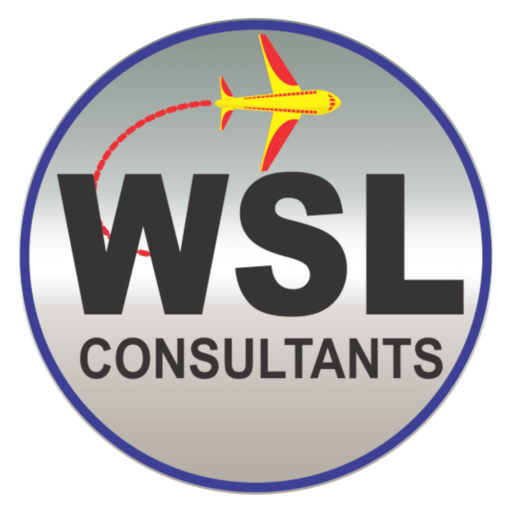Navigating Visa Requirements for study in USA
Introduction:
Study in USA is a dream for many international students, and obtaining visa for study in USA is a crucial step in realizing that dream. The process can seem complex, but with a clear understanding of the requirements, prospective students can navigate it successfully. In this comprehensive guide, we will explore the key aspects of USA study visa requirements to help aspiring students embark on their educational journey in the United States.
Types of Visas for study in USA:
Before delving into the requirements, it’s essential to be aware of the types of visas available for students. The two primary categories are the F visa and the M visa. The F visa is for academic studies, including language training programs, while the M visa is designated for vocational or non-academic programs.
F-1 Visa Requirements:
- Acceptance into a U.S. School: To apply for an F-1 visa, students must first gain admission to a U.S. academic institution approved by the Student and Exchange Visitor Information System (SEVIS).
- Form I-20: Once accepted, the student receives a Form I-20 from the school, which is a Certificate of Eligibility for Nonimmigrant Student Status.
- SEVIS Fee Payment: Before scheduling a visa interview, applicants must pay the SEVIS (Student and Exchange Visitor Information System) fee.
- Visa Application Form (DS-160): Complete the DS-160 form, which is the online nonimmigrant visa application.
- Visa Interview: Schedule and attend a visa interview at the U.S. embassy or consulate in your home country. Be prepared to provide documentation supporting your intent to study and your ties to your home country.
- Financial Ability: Demonstrate the ability to cover tuition, living expenses, and other related costs. This may involve providing bank statements, affidavits of support, or scholarship documentation.
M-1 Visa Requirements:
- Acceptance into a U.S. Vocational School: Similar to the F-1 visa, M-1 visa applicants must be accepted into a U.S. school offering vocational or non-academic programs.
- Form I-20: Obtain the Form I-20 from the school, serving as proof of acceptance.
- SEVIS Fee Payment: Pay the SEVIS fee before the visa interview.
- Visa Application Form (DS-160): Complete the DS-160 form online.
- Visa Interview: Attend a visa interview at the U.S. embassy or consulate, providing necessary documentation and proof of financial capability.
Important Considerations:
- English Proficiency: Some schools may require proof of English proficiency through standardized tests like the TOEFL or IELTS.
- Maintaining Student Status: Once in the U.S., students must maintain their F or M visa status by attending classes regularly and following other guidelines outlined by U.S. Citizenship and Immigration Services (USCIS).
Understanding F-1 Visa Requirements:
- Acceptance into a U.S. School: Before applying for an F-1 visa, prospective students must receive acceptance from a U.S. institution recognized by SEVIS. This involves submitting academic records, standardized test scores (such as the SAT or GRE), and letters of recommendation. Each school has its own admission criteria, so it’s crucial to research and comply with the specific requirements of the chosen institution.
- Form I-20: The Form I-20 is a critical document provided by the U.S. school, indicating that the student has been accepted and is eligible for F-1 status. It includes details about the program of study, expected duration, and estimated costs. Students must pay close attention to the information on this form, as it will be referenced during the visa application process.
- SEVIS Fee Payment: The SEVIS fee is a mandatory payment that funds the Student and Exchange Visitor Information System, which tracks and monitors students and exchange visitors in the U.S. The payment can be made online, and students should keep the receipt as it will be required for the visa application.
- Visa Application Form (DS-160): The DS-160 form is an online application form that gathers essential information about the applicant. It is crucial to complete the form accurately and truthfully. Applicants will receive a confirmation barcode upon completion, which they should save and print for the visa interview.
- Visa Interview: The visa interview is a crucial step in the application process. It allows consular officers to assess the applicant’s eligibility and intent to study in the U.S. During the interview, students should be prepared to discuss their chosen course of study, future plans, and financial capability. It’s advisable to bring all relevant documents, including the Form I-20, SEVIS fee receipt, passport, and financial proof.
- Financial Ability: Demonstrating the financial ability to cover tuition, living expenses, and other costs is a vital aspect of the application. This may involve providing bank statements, affidavits of support, or scholarship documentation. The U.S. immigration authorities want to ensure that students can support themselves financially throughout their studies.
Understanding M-1 Visa Requirements:
M-1 visa requirements share similarities with the F-1 visa, with some specific distinctions:
- Acceptance into a U.S. Vocational School: M-1 visa applicants must secure admission to a U.S. vocational school offering non-academic programs. These programs often focus on practical skills and hands-on training in fields such as technical or vocational education.
- Form I-20 and SEVIS Fee: Similar to the F-1 visa, M-1 visa applicants need to obtain the Form I-20 from their chosen vocational school and pay the SEVIS fee.
- Visa Application and Interview: The DS-160 form and the visa interview process are also applicable to M-1 visa applicants. They need to be well-prepared to discuss their vocational program and future career goals during the interview.
Important Considerations:
- English Proficiency: Some U.S. schools may require proof of English proficiency through standardized tests like the Test of English as a Foreign Language (TOEFL) or the International English Language Testing System (IELTS). Meeting these requirements is essential for admission and visa processing.
- Maintaining Student Status: Once in the U.S., students must adhere to the regulations set by U.S. Citizenship and Immigration Services (USCIS) to maintain their F or M visa status. This includes attending classes regularly, refraining from unauthorized employment, and following any specific guidelines outlined by their school.
Conclusion:
Navigating visa requirements for study in USA involves careful planning and adherence to the outlined steps. Prospective students should start early, gather all necessary documents, and be well-prepared for the visa interview. By understanding and fulfilling the requirements, aspiring students can embark on their academic journey in the United States with confidence and excitement.

